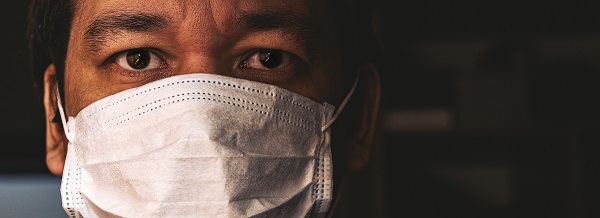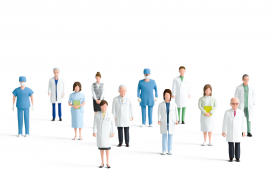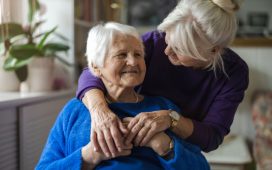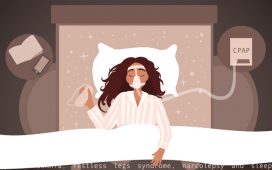Referred to as Chicago’s “public health legend,” Linda Rae Murray, MD, MPH., an adjunct assistant professor at the University of Illinois at Chicago School of Public Health and a past president of the American Public Health Association, recently spoke with JAMA on how the COVID-19 pandemic has put a major spotlight on health inequities and systemic racism, especially in light of the recent killing of George Floyd by Minneapolis police officers.
Explaining the disproportionate numbers of COVID-19 cases in black and brown communities
Opening this interview, Murray is asked what is driving a high number of COVID-19 cases and deaths in black and brown communities when these groups account for such a small percentage of the total U.S. population.
While it may be easy to blame this on the personal behaviors of these communities, Murray says that is just not fair and does not even begin to tell the whole story. Yes, personal behaviors do have some impact on these differences, however, the current global pandemic presents the health care system with the opportunity to closely examine health inequities. Taking a look at structural factors, such as how the U.S. votes, who and who does not have medical insurance, who are able to get sick days and who are not, etc. all carry large weight that impact health disparities at the individual and population-based level.
Murray provokes us to look beyond the essential healthcare professional (HCP) workers. The other, often forgotten, essential workers are usually underpaid, low-wage workers (ex: grocery store stockers and transportation workers) who do not have access to sick days. Given the nature of their jobs, they also do not have the privilege of working from home. Areas where there are many of these essential workers also happen to match up with low-income working-class and black and brown communities. It’s these structural factors, the things that force people to have high blood pressure, like racism, and having to go into work, and living in a household that has multiple people sharing confined spaces, etc. that drive such differences in case rates.
Poor communication during a global pandemic and its impact on minority groups
In April, a young black man in Chicago held a house party to honor two of his friends that were killed from gun violence. This young man was publicly shamed for having held this gathering during the full lockdown. He apologized and explained he did not hear much about the coronavirus or the risks it posed. What does his comment say about public health messaging and is enough being done, especially for minority communities?
According to Murray, messaging about something as big as a global pandemic must be different for different age groups/populations. This means what one message will say to an older generation should be different to what is said to younger generations. Where these different messages appear is another important factor. For example, most teens are not tuning into nightly CNN for their news; they are on social media. The context and placement of messaging should therefore be altered to best communicate to this age group.
Furthermore, the information that is being presented, whether it is reaching all age groups or not, is often quick-changing and confusing, and allows for miscommunication and false info about COVID-19.
Who gets COVID-19? How myths and misconceptions spread among minority communities
JAMA highlights that among the black and latinx communities, there have been growing myths and misconceptions that these groups do not get the coronavirus, even though the data show these two groups make up the highest prevalence of COVID-19 in the greater Chicago area.
Minority communities who lack access to accurate information are prone to making up reasons and creating myths and misconceptions, and even conspiracy theories around public health crises such as COVID-19. HCPs have the obligation to provide correct information and debunk myths by initiating dialogues and answering questions with their patients.
Distrust of the medical institution by the black community; What bearing does it have on the COVID-19 pandemic?
To tackle this topic, Murray shared her own personal experience she had with parents when they were still living. One day, Murray was helping her parents choose a Medicare plan, while also trying to convince them to get their flu shots. Her parents said, “Linda, we don’t trust doctors, and we haven’t forgotten that you’re one of them.” How profound is that?
Murray agrees black people have every right to distrust the medical community because of the structural racism in medicine as an institution that takes place in hospitals, clinics, and even insurance plans. While people may like and trust their individual physicians, it is the institution they have trouble putting their faith, and even more importantly, their lives in.
Murray says that it is here that HCPs put aside any judgement and focus on providing care and understanding.
What will access to a COVID-19 vaccine look like for minority communities?
In her exact words, Murray said, “it is a crime that the richest country in the world cannot provide medical care for everyone in our boarders.” She believes that this will carry over to access for a COVID-19 vaccine for minority groups. For example, while their hospitalization may be covered, once discharged, in order to stay alive and recover, they may need to continue oxygen therapy once home. That can run a few hundred dollars; a fee impossible to come by for many, many people.
To bring this article full circle, the killing of George Floyd, especially when it was so obviously taped and police knew they were being filmed, and the fact that it still happened, is appalling and terrorizing.
It is Murray’s hope that Americans come to grips with structural racism and what it actually means. It takes more than just acknowledging that is it a major problem. America as a whole must work together to change how our physicians and other health care workers are educated, and the face of the medical profession much change in how we think about and diagnose disease.
Murray ends her interview with, “We have a lot of power, and authority, and respect as physicians, and we know what we need to do to have healthy communities. We need to speak out forcefully and strongly and say, “No, this is what we need to do to have healthy children in our schools, this is what we need to do to have healthy seniors in our communities.” We know what to do. We just have to come together and begin to do it.”
Source: JAMA Network








